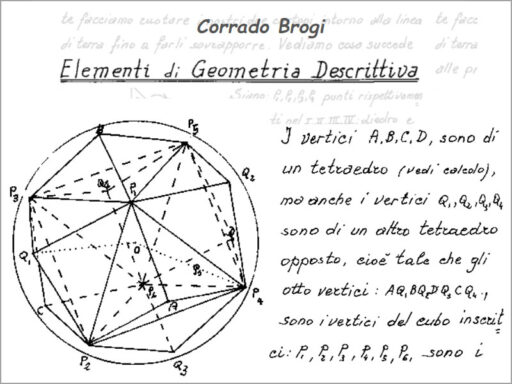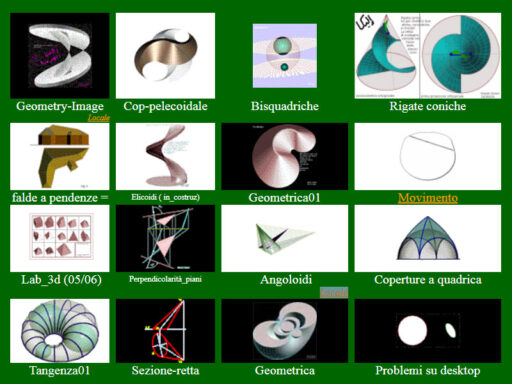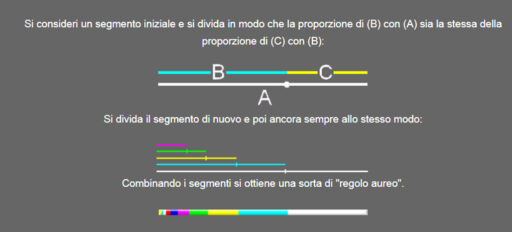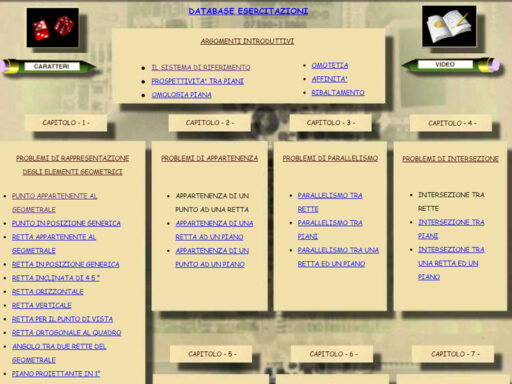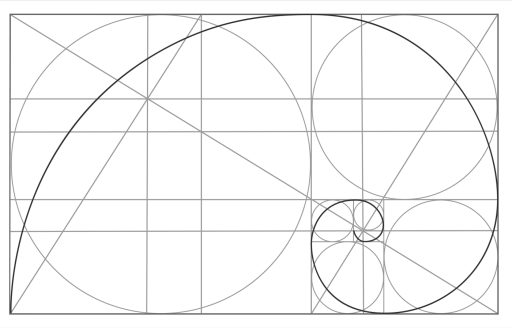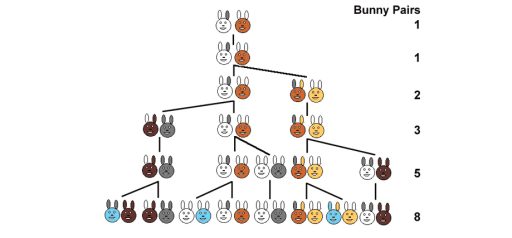Lessons in Descriptive Geometry
Notebook of notes on lectures by Prof. Riccardo Migliari
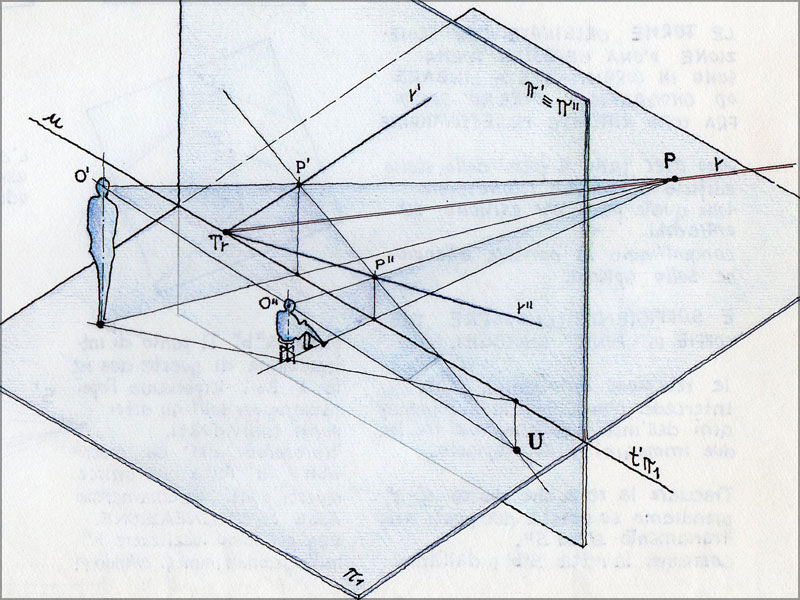
Lectures by Prof. Riccardo Migliari
University of Rome “La Sapienza” Faculty of Architecture
Prof. Migliari’s lectures were precisely recorded in the notebook, all entirely written, drawn and colored freehand. I remember Prof. Migliari as an extraordinary teacher, descriptive geometry for many was not an easy subject, he managed with simplicity to expound complex concepts and make everything clear and understandable for everyone. We are sure that the publication of these lectures of his is a valuable aid to the understanding of this fantastic subject.
What is the purpose of descriptive geometry?
Descriptive geometry is a discipline primarily used to represent three-dimensional objects on two-dimensional surfaces, such as the plane. Its main uses include:
Graphic representation: It allows describing three-dimensional objects and spaces through orthogonal projections onto working planes, enabling precise and detailed representation.
Design and technical drawing: It is fundamental in the fields of engineering, architecture, and industrial design for drawing plans, sections, elevations, and construction details of complex objects.
Spatial analysis and visualization: It helps understand the shape and arrangement of objects in three-dimensional space, facilitating the analysis of geometric relationships and the visualization of complex spatial concepts.
Visual communication: It provides a common visual language to communicate geometric ideas and concepts among professionals, students, and clients.
Architectural and engineering design: It provides the basis for designing buildings, structures, and machinery, allowing architects and engineers to visualize and evaluate their projects accurately.
In summary, descriptive geometry serves to translate three-dimensional objects into two-dimensional representations, facilitating communication, analysis, and design in a variety of fields, from architecture to engineering and design.”






























































